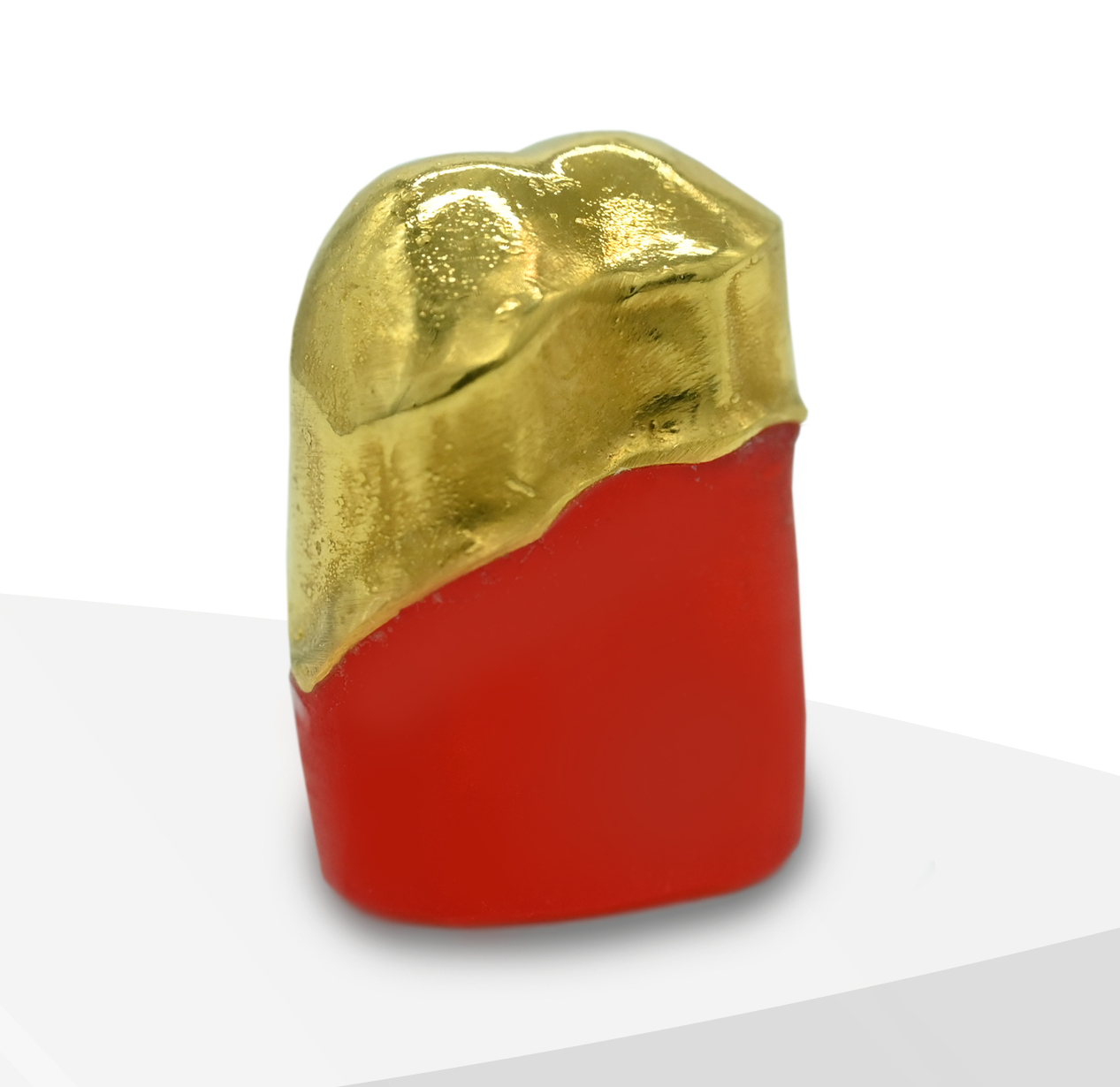A telescopic prosthesis is a combined denture: one part is fixed while another remains removable. If the remaining dentition does not offer enough pillars, implants can help. With a partial denture, fewer abutments are sufficient. The pillars are the basis for the primary telescopes, i.e. for the inner crowns. The inner crowns are attached to the ground teeth or the implants. The removable part of the telescopic restoration – the outer crowns or secondary crowns – is then placed precisely on the inner crowns. When inserting the prosthesis, the outer crowns slide over the inner crowns like a glove over a hand. The resulting static friction ensures that the double crowns are held securely. Telescopic dentures feel like fixed teeth, are stable and meet high aesthetic standards. They are therefore a very good alternative to implant-supported dentures. In the case of a galvanic telescopic restoration, a fine gold framework is produced electrically, which fits precisely onto the inner crown - typically made from the materials cobalt-chrome (CoCr) or zirconia, but also possible in titanium or gold - and is firmly glued to the removable outer crown.
The production of the filmy gold coping takes place in the electroplating bath. For this purpose, the primary parts powdered with silver are introduced into a cyanide-free galvanic electrolysis gold bath. The current flowing through the electroplating bath causes a thin gold layer of around 200 µm, i.e. around 0.2 mm, to be deposited on the resin dies. The result is filigree electroformed frameworks made of 99% fine gold, which are free of pores and cavities, are extremely stable and fit exactly on the primary telescopes which are fixed in the oral cavity. The gold copings are bonded intraorally to the removable cobalt-chrome superstructure to guarantee a tension-free, precise fit.
Advantages of electroplated telescopic denture
With its very high fine gold content of 99.9%, the electroplated gold framework has excellent biocompatibility and practically rules out allergic reactions. In addition, the material is durable, resistant to acids, bases and salts and makes the dentures very high quality. The filmy galvanic gold application saves enormous material costs compared to a solid gold solution, and gold particles remaining in the galvanic bath can be reused. In general, electroplating is characterized by a perfect fit and excellent sliding behavior of the primary and secondary parts due to its system-related precision, which has an extremely positive effect on the friction and the adhesive force of the telescopic dentures. The primary telescope made of cobalt-chrome can be replaced by zirconia in the case of electroplating. Zirconia reduces the optical unmasking effect compared to cobalt-chrome when the prosthesis is removed, while biocompatibility is higher at the same time.
Disadvantages of electroplated telescopic denture
In dental technology, electroforming is a complex process with many steps which require time and money. In addition, the specialist discipline requires a lot of experience and know-how from the dental technicians. The cost of an electroplating telescope restoration is higher than that of a cobalt-chrome primary and secondary telescope crown.
PEEK as an electroplating alternative
As an alternative to electroplating with fine gold in telescope technology, we can use the high-performance resin PEEK. In terms of biocompatibility, PEEK offers the same advantages as gold, but is cheaper and also metal-free. However, the wall thickness of PEEK frameworks is thicker than that of electroplated gold frameworks.
CONCLUSION
Galvanic restorations with fine gold represent a high-quality solution in telescopic prosthetics: their friction and adhesive strength is better than that of double crowns made of cobalt-chrome. The cost-effective dosing of the amount of gold in electroforming contributes to the financial efficiency for the patient. In the dental practice, however, we have noticed that patients prefer to choose double crowns made of cobalt-chrome, which certainly has something to do with the increased costs for the alternative electroplating, combined with the clearly defined fixed subsidies from the insurance companies for the cobalt-chrome health insurance benefit.

